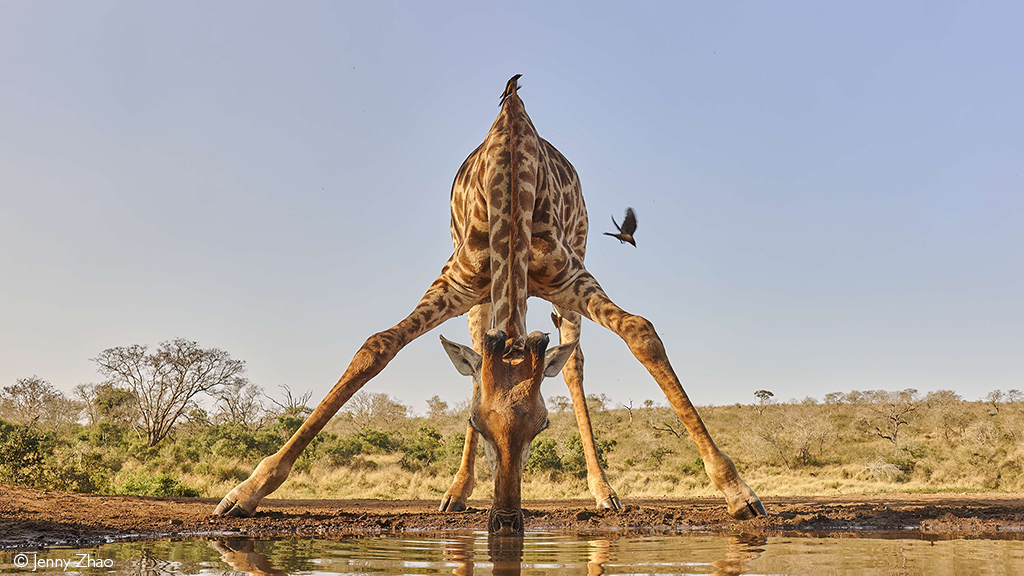
Giraffe are an endless source of fascination for scientists and a highlight on any African safari. In recent years, ground-breaking research has revealed the secrets of their complex physiology and unexpected nuances to their social structures. Now, a new study has uncovered another startling revelation: giraffes are capable of statistical inference.
The basis for the methodology of the study (conducted on zoo animals) was simple: in a giraffe’s world, zucchini pieces are okay, but carrot pieces are delicious. The animals were individually presented with two transparent tubs – one with many zucchini and a few carrot pieces and the other with more carrots than zucchini. The experimenter would simultaneously grab one piece from each tub (in view of the giraffe but without the giraffe being able to see what the piece was) and offer both hands to the giraffe. The giraffe then “selected” a hand by touching it and received its reward in the form of a zucchini (ugh!) or a carrot (yum!). Almost unfailingly, the giraffe chose the hand from a tub with a higher proportion of carrot pieces, thus increasing their chances of receiving a carrot.

The next question was whether the giraffe were actually using statistical inference or just comparing the absolute quantities of carrot in each tub. To rule out the latter, the amounts and proportions of carrot and zucchini pieces varied as the experiments continued. The giraffe continued to select the hand with a higher probability of containing a carrot, suggesting they could use the visual evidence of relative frequencies to draw a statistical conclusion. (You can watch a brief video of the various tests here.) The researchers also conducted the experiment without allowing the giraffe to see the tubs, as a control trial to ensure that the animals were not using their sense of smell to guide previous selections.

For a long time, the ability to use probabilities as a reasoning tool had been considered an adult human trait. However, studies in recent decades have shown that very young children (and possibly even infants) have the ability to a certain degree. Similarly, the ability to use statistical inference has been found in great apes, long-tailed macaques and keas (a parrot species found in New Zealand). But all these species have a large brain relative to body size, which led to the hypothesis that large brain size is necessary for complex statistical analysis. Giraffe have a relatively small brain size, so these results disprove this hypothesis. In fact, the authors suggest that such statistical inference might be far more widespread in the animal kingdom than we ever realised.
Either way, this study adds to a growing body of evidence suggesting that giraffe have complex cognitive abilities.
Reference
Caicoya, A. L., Colell, M. and Amici, F. (2023) “Giraffes Make Decisions Based on Statistical Information,” Scientific reports, 13(1), pp. 5558–5558
Further reading
The giraffe is a wonder of evolution and a vital part of Africa’s ecosystems. Read all there is to know about the planet’s tallest creature here.
Giraffe social structure is as complex as elephants’ – consisting of intricate communication, stable kinship and supportive mothering. Read more here.
Read about genetic research on giraffes that reveals evolutionary secrets of how they cope with high blood pressure and maintain bone density.
To comment on this story: Login (or sign up) to our app here - it's a troll-free safe place 🙂.![]()








